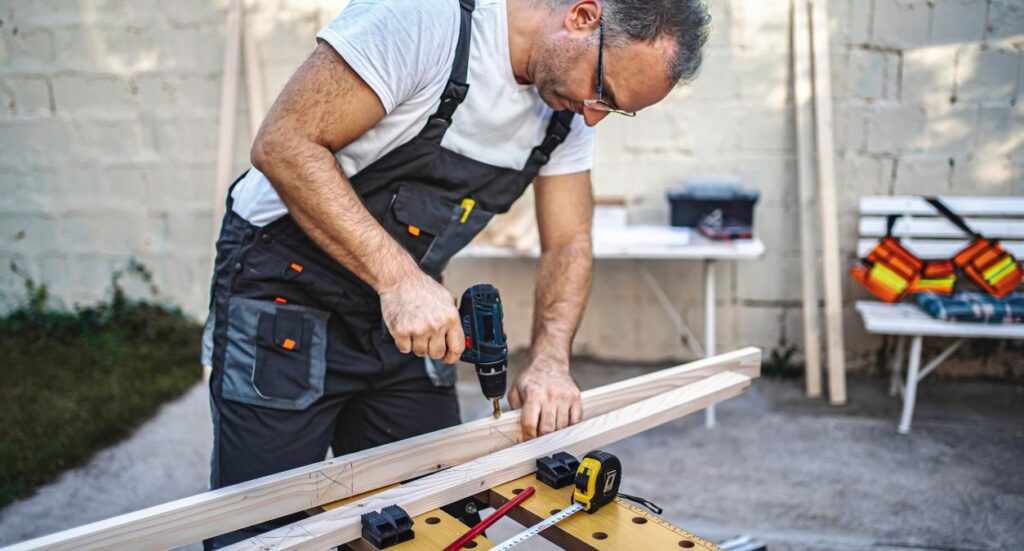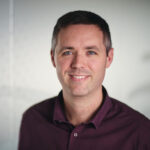If you ask ten carpenters what’s in their toolbox, you’ll get ten different answers – but you’ll also see some familiar favourites. A carpenter’s tools are more than just bits of kit; they’re the lifeblood of the trade. From measuring twice to cutting once, from shaping timber to fixing joints, the right tool makes the job possible – and keeps work safe, accurate and professional.
Whether you’re working in a joinery workshop, out on site, or moving between the two, your toolbox will contain a mix of everyday essentials and more specialist gear. In this blog, we’ll run through the full range: what’s essential, what’s specialist, how much tools typically cost, and how to keep them organised, safe and working properly.
Carpenters’ everyday tools
Essential hand tools
The basics never go out of style. A hammer, sharp chisels, a reliable handsaw, and a sturdy tape measure are the bread and butter of carpentry. Add in a combination square and spirit level, and you’ve got the foundation for accurate measuring and straight work. Hand planes and files help finish pieces cleanly and are often the mark of craftsmanship – a well-honed edge can save hours of sanding.
Why it matters: these tools are often faster for small adjustments than power tools, and they don’t rely on batteries. They also showcase skill – anyone can drive a screw with a drill, but a clean chisel cut shows real control.
Power tools for Daily Use
No modern carpenter is without cordless kit. A drill/driver is probably the first power tool in most boxes, quickly followed by impact drivers, circular saws, and orbital sanders. Cordless systems mean fewer extension leads on site, and batteries that fit across a range of tools help keep things efficient.
Why it matters: time is money on site, and cordless tools save huge amounts of it. They’re also versatile enough for both workshop and site work, provided you keep your batteries charged.
Workshop tools vs On-site tools
Workshop-based tools
In the joinery shop, bigger is better. Table saws, band saws, and thickness planers allow for precision cuts, repeatability, and efficiency. A solid bench with clamps and vices is the cornerstone of controlled, safe working. Dust extraction is also essential – not just for tidiness but for health and compliance.
Why it matters: these tools aren’t portable, but they’re unbeatable for accuracy and consistency. They let joiners prepare workpieces in bulk and to exact dimensions before heading to site.
On-Site / Jobsite Tools
When you’re working in someone’s home or on a building site, portability and flexibility are key. Smaller circular saws, jigsaws, cordless routers, and multi-tools often come into play. Storage matters too – stackable site boxes, tool belts, and backpacks keep everything to hand.
Why it matters: on site, you need to move fast and adapt to changing conditions. Having compact, reliable tools ready means less downtime and fewer trips back to the van.
Essential to specialist tools

Specialist tools for joinery & fine woodworking
For intricate joinery, carpenters might reach for biscuit joiners, domino joiners, or dovetail jigs. Routers with specialist cutters open up a world of finishing and shaping options. Cabinetmakers often rely on precise clamps, veneer tools, and delicate carving tools to get a polished finish.
Specialist tools aren’t used daily, but when they’re needed, nothing else will do. They allow carpenters to take on higher-value, precision work and set themselves apart from general trades.
Tools for specific woodworking jobs
Not every carpentry job can be tackled with just the everyday kit. While a hammer, saw and drill will see you through most tasks, certain projects demand tools designed with a very specific purpose in mind.
These niche tools might not come out of the box every week, but when the job calls for them, they’re invaluable. They allow carpenters to work faster, achieve better accuracy, and deliver a professional finish that simply isn’t possible with improvised methods.
For example:
- Roofing – framing squares, nail guns, and heavy-duty saws.
- Flooring – floor clamps, mallets, flooring saws for neat cuts.
- Restoration & heritage – moulding planes, carving chisels, and fine saws to match historic profiles.
The right tool avoids bodges. Having the right gear for the job makes for faster work, fewer mistakes, and better long-term results.
How much do carpentry tools cost?
Costs vary depending on brand and grade. A decent chisel set might be £40–£100, while a quality cordless drill set can easily run to £200+. Bigger workshop machinery like a table saw starts around £600 and can reach several thousand for trade-level kit.
Many carpenters mix and match: invest heavily in the tools used every day, while picking up less-frequently used tools second-hand or at entry-level quality. Maintenance also plays a big role – sharpening a plane blade extends its life far beyond its upfront cost.
Why it matters: tools are a big investment, and carpenters often build their kit gradually. Choosing wisely means fewer replacements and more reliable work.
Average value of a carpenters’ toolbox
When you tot everything up, the numbers are significant. A working carpenter’s kit of everyday hand tools, cordless power tools, and storage solutions will often add up to £2,000–£5,000. For those running full workshops or carrying a wider range of specialist tools, the figure can be considerably higher – often £10,000+ once machinery and site security equipment are included.
That’s why tool theft is such a serious issue in the trade. For most carpenters, replacing a stolen or damaged toolbox isn’t just about the money – it can mean being unable to work for days or weeks. Protecting and insuring tools is as much a part of the job as buying them in the first place.
Storing and organising tools

On the job
Site work calls for practical storage. Tool belts keep essentials literally on your hip, while tough site boxes protect gear from weather and damage. Stackable modular boxes (often designed to click together) are becoming more popular for van storage and site mobility.
In the workshop
In a static shop, it’s all about visibility and access. Pegboards, shelving, and shadow boards (where each tool has a marked place) help keep things organised. Protecting cutting edges with blade guards or sheaths reduces accidents and saves on sharpening.
Why it matters: organised tools save time, reduce frustration, and cut the risk of misplacing expensive kit.
Keeping tools safe
Preventing theft
Unfortunately, tool theft is a common issue in the UK. Solid site boxes with locks, chains in vans, and marking or engraving tools can deter thieves. Insurance is another key consideration, though it often comes with strict conditions.
Preventing damage & wear
Tools need care to perform. Wiping down steel tools with oil prevents rust, while sharpening routines for chisels and planes keep them cutting cleanly. Batteries should be stored dry and charged safely – not left rolling around the van.
Why it matters: stolen or broken tools don’t just cost money, they cost time and jobs. Keeping your kit safe is as important as owning it.
Other considerations
PPE & safety equipment
A carpenter’s toolbox isn’t just about cutting and fixing. Safety gear – goggles, gloves, ear defenders, and dust masks – should be considered essentials. Many carpenters also keep a small first aid kit handy.
Emerging tech in the toolbox
Modern carpentry is seeing more digital tools – from laser measures and digital spirit levels to mobile apps for quoting and design. These don’t replace the basics, but they speed up measuring and planning and help win work with professional presentation.
A carpenter’s toolbox is a mix of tradition and modern innovation. From chisels and hammers that have barely changed in centuries to cordless drivers and digital levels, every tool has its place. The right kit not only makes the job possible but makes it faster, safer, and more professional.
Whether you’re just starting out and building up your tools gradually, or a seasoned joiner with a van full of kit, looking after your tools is as important as owning them. After all, they’re not just tools – they’re your livelihood.
Get Carpenters Insurance from Protectivity
*Disclaimer – This blog has been created as general information and should not be taken as advice. Make sure you have the correct level of insurance for your requirements and always review policy documentation. Information is factually accurate at the time of publishing but may have become out of date.
Last updated by

















